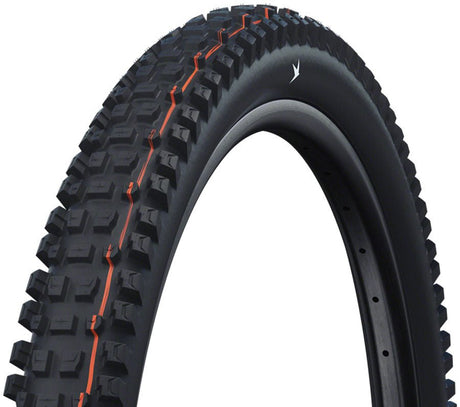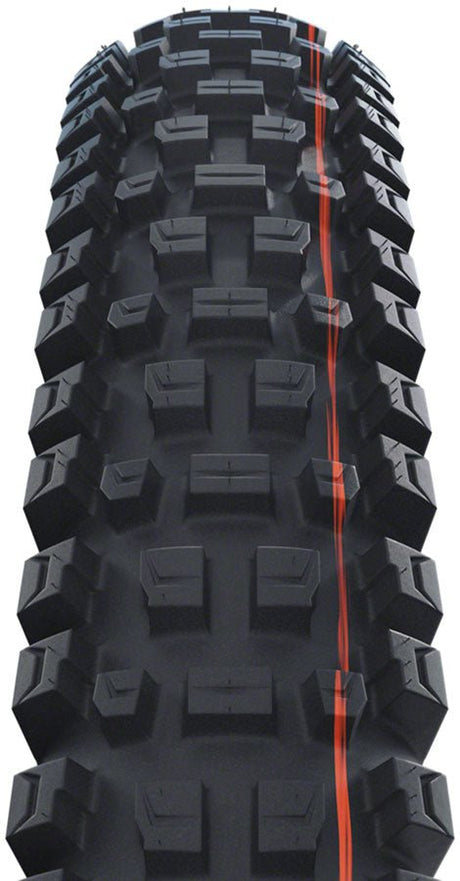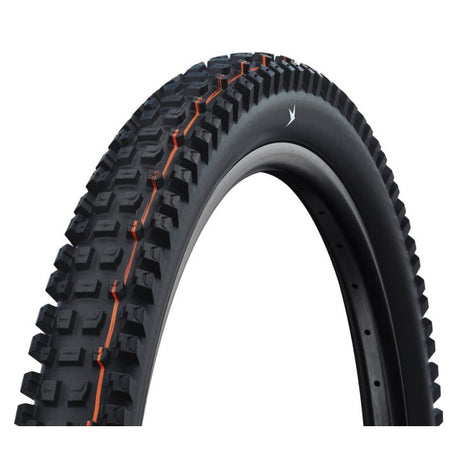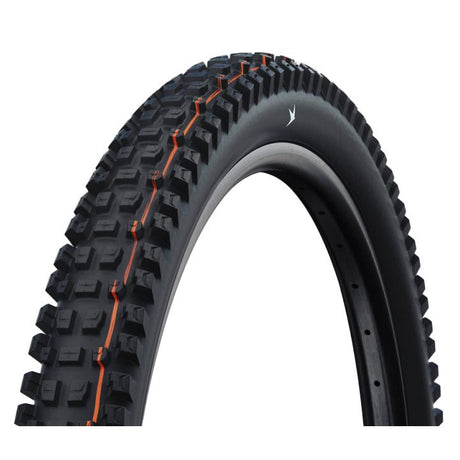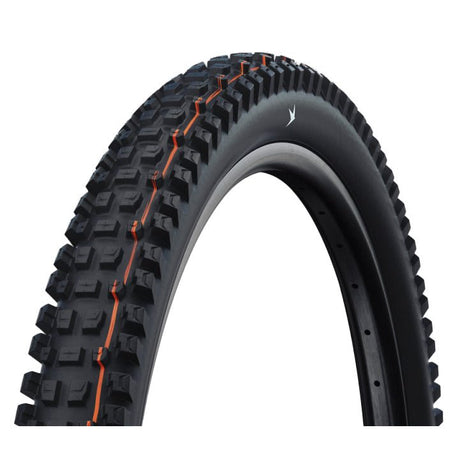Intro
There are three main factors in a tire, and only one of them is visible to the naked eye. Anyone with at least one working eye can distinguish between tread patterns, but only Superman with his X-Ray vision can distinguish between different rubber compounds and casings at a glance. Schwalbe is releasing a new line of tires, and updating two of those three categories. There are three new tread patterns, along with a redesigned radial casing, and we’re going to activate our X-Ray vision to figure out exactly what that means. It’s been a while since we’ve seen this level of innovation from a tire manufacturer, and while all three of the new tread patterns are exciting in their own right, we’re going to focus on why you should care about the new radial casing in this article.
Schwalbe has been developing this new radial casing design for years, and they’ve won 10 World Cup DH races before they went public. That should be all you need to know to try them out for yourself, but we’ll explain exactly what’s going on here. Obviously, the goal with any tire is gaining traction, and the best way to do that is increasing the contact patch your tire makes with the ground. Tires with lower pressure have a larger contact patch than a super inflated tire because they can deform more, giving riders more traction. Another common way to adjust traction is with the “threads per inch”, or TPI, of the plies. Decreasing TPI makes for a more supple but less durable tire, while increasing TPI makes a tire more puncture resistant at the expense of grip. Schwalbe isn’t budging from their preferred 67 TPI, but instead, they’re changing the angle those threads in each carcass layer cross each other.
The word “radial” is referring to the orientation of the threads in each layer of the tire, and radial technology has been used in car tires for decades. Threads in a radial tire cross in parallel with each other, stretching directly across the tire from one end of the rim to the other. Since the 19th century, bike tires have used a bias ply casing, where the threads are at a 45 degree angle to the rim, and cross each other at 90 degrees. Schwalbe’s new radial tires meet somewhere in the middle, and while they aren’t a true radial tire like car tires, their threads cross each other at a very obtuse angle, giving their new tires completely different characteristics to any mountain bike tire we’ve seen before.
Look at that fresh new angle!
Ride Qualities
Again, we’re all about increasing that contact patch to get more traction, and the radial tires do exactly that. Because of the more blunt angle of the carcass threads, the tires deform more easily than a bias ply tire, which has the most rigid orientation of threads to improve rigidity. At 22 psi, a radial tire is going to have a 30% larger contact patch than a bias ply tire, directly translating to more grip. That larger contact patch does give more grip, but it’s a compromise that means more rolling resistance. We haven’t gotten a ton of time on these tires just yet, but most riders are running about 5 psi more in their radial tires than their previous tires with a conventional bias ply construction to get a similar amount of sidewall support. At 28 psi, the radial tire still has a 10% larger contact patch than a 22 psi bias ply tire, as well as a similar amount of rolling resistance and sidewall support.
Puncture resistance of the radial casing is going to be very comparable to the previous generation of Schwalbe downhill tires, which have proven themselves to be some of the hardest tires to flat in my experience. Each casing uses the same number of carcass layers, and because riders are going to be using more tire pressure than before, you can expect at least as much security when pinging through sharp rocks or over shooting landings.
Bigger contact patch = More grip. It's not rocket science.
A final benefit that Schwalbe is touting is the damping qualities of the radial casing. Your tires are the first and arguably most important component of your bike’s suspension. Tire damping joined the conversation in a big way when CushCore called themselves a suspension upgrade, and now every tire press release touches on their suspension prowess. Schwalbe is no different, and their radial tires are armed with oscillation damping to keep the rebounding controlled after every impact. Not only that, but their radial tires are distinctly quieter while riding, giving a more distinct and controlled sounding thud at every impact.
Like we said earlier, they’re good enough for World Cup Downhill racing, so they should be plenty good for us mortals!
Spec Options
For now, there are two radial casing options, Gravity Pro and Trail Pro, and all tires come in both 29” and 27.5” varieties. Just as you’d expect given their names, Gravity Pro is the most supportive but heaviest casing, and Trail Pro is lighter but less supportive. As for weights, the 29”x2.5” Gravity Pro Albert in Ultra Soft rubber tipped our scales at 1310g, while the 29”x2.5” Trail Pro Albert in Ultra Soft rubber came in at 1141g. At the time of writing this, there are four tread patterns offered with the radial casing: Albert, Shredda Front, Shredda Rear, and the classic Magic Mary.
Conclusion
Tires might be the single most important part of our mountain bikes, and the claims Schwalbe is making are exciting to say the least. I’m curious to see if other tire companies will follow suit and release their own line of radial casing equipped tires, and it’ll be interesting to see if Schwalbe goes all in with their new casing, or if the bias ply casings still have their place in the lineup. We’ve just gotten a bunch of Alberts in for testing so check back in for a full review down the line.

